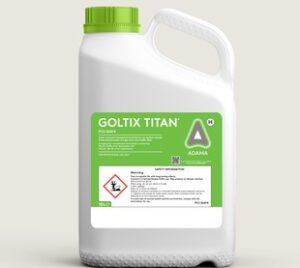With sugar beet prices up significantly compared to last year – by as much as 50% where growers are willing to commit to producing a crop in 2023 and 2024 – it will pay to invest in an effective weed control programme this spring. That’s the advice from ADAMA’s herbicide technical specialist, Dr Bill Lankford, who claims that a well thought out weed control programme will deliver a significant yield response in sugar beet, with scope for a yield lift in the range of 10-20% compared to crops where weed control is below par.
“In recent years sugar beet growers have predominantly relied on phenmedipham based herbicides to control the majority of weeds,” Dr Lankford explains. “However, as weed flora has diversified as a result of changes in agricultural practices, and phenmedipham products have moved to less effective suspension concentrate formulations as a result of legislative changes, relying on one key active ingredient is no longer adequate to provide complete control.”

Dr Bill Lankford
A wider array of chemistries should therefore be used alongside phenmedipham, with actives such as metamitron, quinmerac, ethofumesate, clopyralid, dimethenamid-p and propaquizafop giving good results against many of the key yield-robbing weed species.
“The easiest of these actives to incorporate into programmes is metamitron thanks to its broad label, good crop safety and dual contact and residual activity. It also partners well with quinmerac which delivers added efficacy, especially in dry conditions thanks to its useful water solubility.”
Dr Lankford explains that adding metamitron and quinmerac enables sugar beet growers to ‘power-up’ their current herbicide strategies by targeting a wider range of target weeds including cleavers, bindweed, black nightshade, fool’s parsley and common field speedwell.
“Of course, the inclusion of additional active ingredients into the tank mix doesn’t come for free, but growers can be assured that products such as Goltix (metamitron 700 g/L) and Goltix Titan (metamitron 525 g/L and quinmerac 40 g/L) will pay for themselves, especially where the weed burden is high.”
Manage workloads
Dr Lankford explains that the application of a robust programme of early season weed control (either as pre-emergence or early post-emergence treatments) will not only boost crop yields but can also help growers to manage workloads by giving some flexibility in terms of application timings.
“Active ingredients such as quinmerac aren’t cheap,” Dr Lankford admits, “but where the weed burden is

Goltix Titan
high and includes difficult to control species, its addition is more than worth it, especially at a time when sugar beet prices are so buoyant.”
In addition to its metamitron and quinmerac herbicides, ADAMA has also developed a co-formulation of phenmedipham (200 g/l) and ethofumesate (200 g/l): “PowerTwin was developed as a result of feedback from farmers who wanted an easy-to-use formulation of these two actives to tackle a range of weeds.
“Its combination of a residual and a contact herbicide, and compatibility with six common adjuvants makes PowerTwin easy to incorporate into weed programmes, with growers able to adjust the rate of application according to their specific weed burden.
“We’re also in the process of bringing a straight ethofumesate product which has a higher individual dose to the market so that growers can control established weeds more effectively at the post-emergence timing.”




